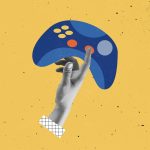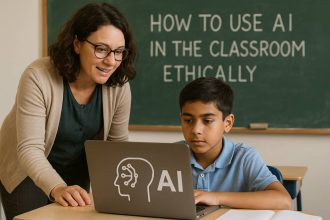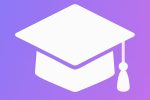Every student has faced the frustration of pouring hours into reading, highlighting, and reviewing, only to sit in an exam hall and find the knowledge slipping away. The problem is not always a lack of effort. More often, it is that students are never taught how to learn. Education systems teach subjects, but they rarely teach strategies for mastering those subjects. Yet research in psychology and neuroscience has revealed powerful methods that can transform how information is absorbed, stored, and recalled. These strategies are not tricks or shortcuts. They are grounded in the way the brain actually processes memory.
At the center of effective learning is the idea that memory is not a simple storage box. When you learn something new, neurons in the brain build connections. The more meaningful the connection, the stronger the memory. The more times you revisit and test the connection, the more durable it becomes. That means the way you engage with material matters more than the time you spend staring at it.
One of the most effective methods is active recall. Most students believe learning happens when they review notes repeatedly, but research shows the opposite. Reading and re-reading creates familiarity, not mastery. Active recall flips the process by asking your brain to retrieve the information without looking at it. For example, instead of highlighting a chapter, close the book and try to explain the main ideas aloud. Quiz yourself with flashcards. Cover your notes and write down everything you remember, then check against the original. Each time you force your brain to pull out the knowledge, you strengthen the memory network.
Closely linked to this is spaced repetition. Many students cram before exams, believing intense focus for one or two days is enough. Science shows that spacing your study sessions over time creates far stronger memory. The brain forgets rapidly at first, but each review slows the forgetting curve. Studying for twenty minutes today, then again two days later, then a week later, creates layers of reinforcement. This is why flashcard apps that schedule reviews based on your performance are so powerful. They align with the natural rhythms of memory.
Another key principle is interleaving. Most students prefer to study one subject for hours, then move to another. The brain, however, learns more efficiently when different topics or skills are mixed together. Imagine a student practicing math problems. Instead of solving twenty of the same type, it is better to alternate among several types. The brain must work harder to identify which method applies, and that struggle builds flexibility and long-term understanding. Interleaving also applies across subjects. Switching between related topics forces the mind to make deeper connections, improving retention.
Elaboration is another tool grounded in science. When you encounter a new concept, do not just memorize it. Explain it in your own words, connect it to something you already know, or teach it to someone else. If you are learning about supply and demand in economics, link it to the price of your favorite sneakers or the cost of concert tickets. This process of weaving new information into existing knowledge makes it stick. Teaching is particularly effective. When you try to explain something to another person, you quickly notice gaps in your own understanding and are forced to clarify them.
Environment also matters more than students often realize. Many believe they must always study in the same quiet place, but research shows variety strengthens memory. Studying in different locations, times of day, and even postures creates multiple cues for recall. If you only study at your desk, your brain associates the knowledge with that environment. If you also review in the library, on the bus, or at a café, your brain builds a richer network of retrieval cues, making it easier to recall under any conditions.
Sleep, often neglected, is a hidden weapon in learning. During deep sleep, the brain consolidates memories, transferring them from short-term storage to more permanent networks. Students who sacrifice sleep for study often undermine their own effort. A well-rested brain not only remembers better but also solves problems more creatively. Short naps can also help, providing bursts of consolidation that refresh mental energy.
Emotion plays a surprising role as well. The brain prioritizes memories that feel meaningful or emotionally charged. A fact tied to a personal story or vivid image is easier to recall than a number on a page. This is why visualization works so well. Turning abstract ideas into mental images, diagrams, or stories creates stronger pathways. If you are memorizing historical events, picture the scene vividly. If you are learning anatomy, imagine walking through the body as if it were a building with organs as rooms. The more imaginative the connection, the more likely it will endure.
Technology has made applying these principles easier. Spaced repetition apps, digital flashcards, and adaptive quizzes can automate recall practice. Online communities allow students to teach each other, strengthening elaboration. However, technology should be a tool, not a crutch. The real power lies in the habits. A student who integrates recall, spacing, and elaboration into daily practice will consistently outperform one who spends hours highlighting passively.
One overlooked factor in learning is mindset. Students who believe intelligence is fixed often give up quickly when challenged. Those who believe intelligence is expandable — that skills grow with effort and the right strategies — persist longer and achieve more. Neuroscience supports the growth mindset. The brain rewires with practice. Every struggle, mistake, and correction builds new connections. Seeing learning as a process of growth turns frustration into opportunity.
Another habit that multiplies effectiveness is metacognition, or learning to think about your own thinking. This means asking yourself questions such as: What do I already know about this? What strategies worked for me last time? What errors am I making repeatedly? Metacognitive learners monitor their understanding, adjust strategies, and reflect on outcomes. It is like being both the student and the coach.
Students can also benefit from retrieval practice under pressure. Self-testing in conditions similar to the exam — timed, closed book, distraction-free — prepares the brain to recall under stress. The closer your practice resembles the performance environment, the better your performance will be. Athletes practice under game-like conditions for the same reason.
But perhaps the most important insight is that learning is not linear. Progress feels uneven. Some days it clicks; other days it feels like nothing sticks. Science shows that the very act of struggling is part of memory formation. Effort signals the brain that something is important. Easy learning is often shallow. The discomfort of challenge means you are building resilience and depth.
Learning how to learn is a superpower. It gives you control over any subject, no matter how complex. Whether you are a student preparing for exams, a professional mastering new skills, or a lifelong learner chasing curiosity, these science-backed strategies work. They transform study from a grind into a system that builds confidence and mastery.
The classroom may never teach these strategies directly, but the research is clear. Active recall, spaced repetition, interleaving, elaboration, varied environments, good sleep, emotional connections, growth mindset, and metacognitive reflection create a learning process that endures. The sooner students adopt them, the faster they move from frustration to mastery.
In a world where knowledge doubles rapidly and careers demand constant reskilling, the ability to learn effectively is more valuable than any single subject. It is the one skill that powers all others. Once you know how to learn, you can teach yourself almost anything.
Featured Image Source: Janko Ferlič / Unsplash









